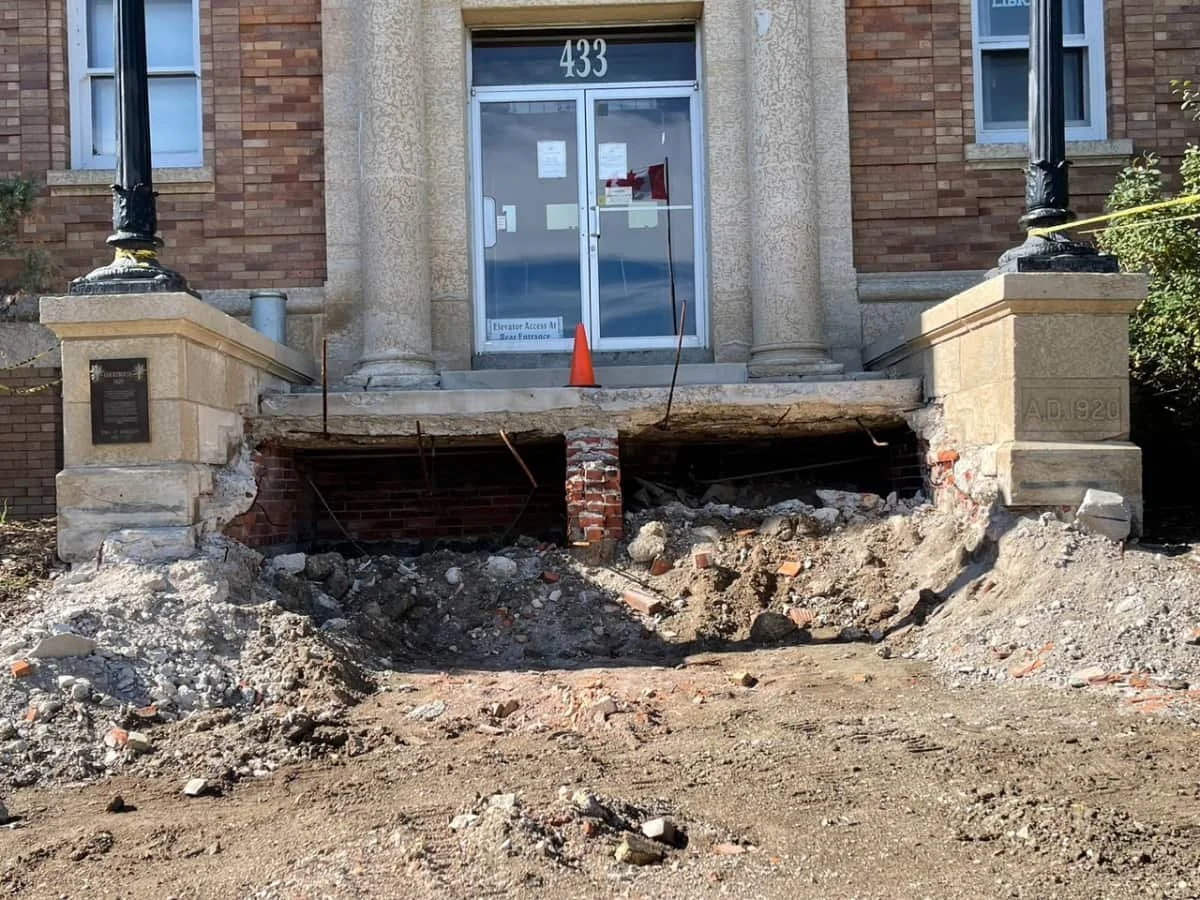Courthouse restorations to begin this spring
By Joan Janzen
Both past and present residents of Kerrobert are proud of the Kerrobert Court House and its impressive architecture. The Kerrobert Courthouse Restoration Society and the Town of Kerrobert are excited to report $90,600.00 has been allocated to the front stair project. The replacement of the front staircase, a very costly project, is the group’s first priority, and will be re-tendered in the near future. The grand marble staircase serves as an expression of the courthouse’s status as a public building.
In addition the Town has commissioned a company to work on selective demolition and restoration of the side walls with new foundations underneath, which will cost approximately $40,000. This work will begin in the spring.
Meanwhile the society’s restoration efforts continue to emphasize the value of this heritage building as an important gathering place for the community. This committee of the town council was formed to fundraise for upgrades to the court house in an effort to restore it to its natural beauty. The building was officially recognized as a Municipal Heritage Site on September 8th, 1982.
Anyone is welcome to join the committee, which meets the last Monday of each month at 7 p.m. at the Court House. Committee members are individuals who have the well being of the building in mind.
According to Kerrobert’s history book “Echoes From The Tower”, in 1995, the NDP government spent $58,000 renovating the Court House, installing new windows and new slate roof, but in September of 1996 it closed its doors. In November of 1998 the Town of Kerrobert was able to purchase the property from Sask. Property Management Corporation and moved the Town Administration to the offices in the court house. Today it houses the museum, Chamber of Commerce, KLD Wellness Foundation, the Courtroom Art Gallery and Shepard & Miller Law Office.
The Courthouse was built by Wilson and Wilson of Regina in 1920 at a cost of $145,750.00, as the seat of the Kerrobert Judicial District. As one of ten courthouses built in the province, it was capable of housing multiple courts simultaneously. Its heritage value lies in numerous aspects of its architecture. Its specific style was chosen in order to help reduce construction costs without taking away from the grandeur of this judicial building.

